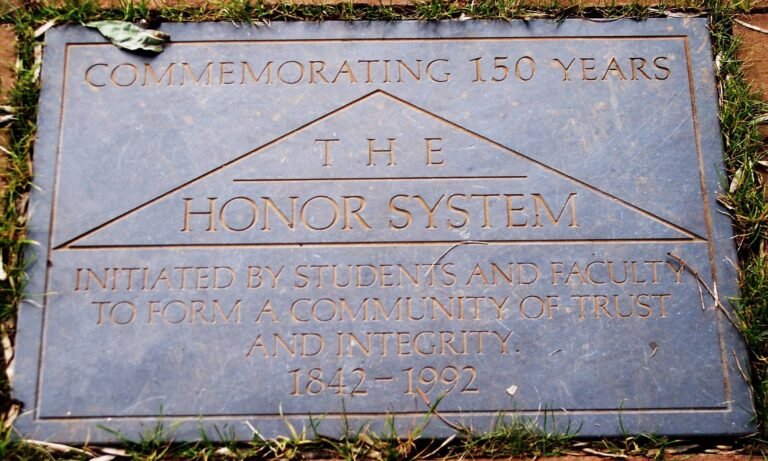Understanding Grievance: The concept of grievance encompasses a range of emotions and actions that arise from perceptions of unfair treatment. It is a term deeply rooted in the human experience, reflecting our innate sense of justice and the pain we feel when it is violated. Grievances can manifest in various forms, from personal feelings of resentment to formal complaints lodged within organizational or legal frameworks.
At its core, a grievance is a real or imagined wrong or other cause for complaint, especially unfair treatment. This could be something as simple as feeling slighted in a social setting, to something as complex as systemic discrimination in the workplace. The common thread is the perception that an injustice has occurred, which can lead to a strong emotional response and a desire for redress.
The formal expression of a grievance is often seen in the context of labor relations, where employees may file complaints against their employers for a variety of reasons, such as unsafe working conditions, unfair labor practices, or violations of contracts. These grievances are a vital part of maintaining a fair and just workplace, as they provide a mechanism for employees to voice their concerns and seek resolution.
However, grievances are not limited to the workplace. They can occur in any context where individuals or groups feel that they have been treated unfairly. This could include issues related to consumer rights, tenant disputes, or even broader societal concerns.
Types of Grievances include:
- Grievance related to Admission
- Grievance related to Victimization
- Grievance related to Attendance
- Grievance related to charging of fees
- Grievance regarding non-transparency or unfairness
- Non-observation of norms and standards
- Refusal to return documents such as certificates
- Harassment by fellow citizens
- Grievance related to provision of amenities
- Non-payment or delay in payments
- Complaints on discrimination from SC (Scheduled Castes) / ST (Scheduled Tribes) / Minorities / Disabled Categories
- Grievance related to timetable scheduling
- Violation of facilities rules
- Institute hostel and mess related issues
- General administration and maintenance related issues
The handling of grievances is a delicate matter, requiring sensitivity and a commitment to fairness. The process of addressing grievances often involves negotiation, mediation, or legal action, with the goal of achieving a satisfactory resolution for the aggrieved party. It is important for organizations and societies to have clear procedures in place for dealing with grievances, as unresolved issues can lead to discontent, conflict, and a breakdown of trust.
In conclusion, grievances are a complex and multifaceted issue that touch upon the very foundations of ethics and justice. Whether it is a personal feeling of being wronged or a formal complaint lodged in an official capacity, the way grievances are addressed speaks volumes about the values and integrity of a community or organization. It is through the fair and just resolution of grievances that we can hope to build a more equitable and harmonious world.
Employment
In the professional landscape, the term ‘grievance’ often surfaces, bringing with it a wave of concern and the need for resolution.
A grievance in employment is a formal complaint raised by an employee towards their employer, stemming from dissatisfaction or perceived unfair treatment within the workplace.
This could range from issues related to pay, benefits, workload, discrimination, or any other aspect that the employee feels deviates from agreed-upon contracts or company policies.
Understanding the Grievance Process: The grievance process is a structured approach that allows for the orderly expression and resolution of such issues. It typically begins with the employee raising the matter informally with their immediate supervisor. If unresolved, it escalates to a formal written complaint, initiating the official grievance procedure. This process is crucial as it provides a platform for employees to voice their concerns without fear of retaliation and ensures that employers address these issues promptly and fairly.
Types of Grievances: Grievances can be individual, where a single employee is affected, or collective, involving a group of employees facing a similar issue. In unionized environments, grievances may also arise when collective bargaining agreements are not honored, leading to union grievances.
The Importance of a Grievance Procedure: Having a clear and well-communicated grievance procedure is beneficial for both employees and employers. For employees, it offers a sense of security and a clear path to address their concerns. For employers, it provides a framework to manage and resolve disputes efficiently, maintaining a harmonious work environment and mitigating legal risks.
Best Practices for Employers: Employers are encouraged to
- Develop a clear grievance policy, outlining the steps and timelines involved in the process.
- Train managers and HR personnel on handling grievances effectively and empathetically.
- Maintain open lines of communication, encouraging employees to come forward with their concerns.
- Treat each grievance with the seriousness it deserves, conducting thorough investigations and offering fair resolutions.
Native Americans
The Native Americans, also known as American Indians, Indigenous Americans, or First Americans, are the original inhabitants of what is now the United States. They have a rich heritage that predates the arrival of European settlers by thousands of years. The history of Native Americans is both complex and fascinating, marked by a deep connection to the land and a diverse array of cultures and languages.
According to the 2020 census, there are approximately 9.7 million individuals who identify as American Indian and Alaska Native, representing about 2.9% of the total U.S. population.
This diverse group of people shares a common thread of being the first inhabitants of the land, with a history that is deeply intertwined with the geography of the United States.
The Native American cultures are as varied as the landscapes they lived in, from the Arctic’s Inuit, known for their dome-shaped houses and seal-skin clothing, to the Plains tribes, renowned for their horse-riding and buffalo-hunting skills. Each culture area, such as the Northeast, the Southeast, the Great Basin, and the Southwest, developed unique traditions, languages, and social structures that reflected their environment and resources.
The impact of European colonization was devastating for Native American populations, leading to a dramatic decline due to diseases, wars, and policies of displacement and assimilation. Despite these challenges, Native American communities have persevered, maintaining their cultural practices, languages, and traditions.
Today, Native Americans continue to contribute to the cultural mosaic of the United States, with a resurgence of interest in preserving and revitalizing indigenous languages and traditions. Organizations and tribal governments work tirelessly to protect the rights and sovereignty of Native American peoples, ensuring that their voices are heard and their cultures respected. Understanding the history and culture of Native Americans is crucial for recognizing their significant contributions to the nation’s history and for fostering a greater appreciation of the diversity that defines the American experience. As we look to the future, it is essential to honor the legacy of the Native Americans and support their ongoing efforts to preserve their rich cultural heritage.
The Aborigines
Aboriginal Australians are the original inhabitants of the Australian continent and nearby islands, and they possess a rich cultural heritage that dates back tens of thousands of years. Archaeological evidence suggests that Aboriginal Australians have lived on the continent for at least 65,000 years, making them one of the oldest continuous cultures on Earth.
The diversity among Aboriginal Australians is profound, with over 250 languages spoken at the time of European settlement. Each language group is associated with distinct stretches of territory, known as “Country,” to which they have a deep spiritual connection.
This connection to the land is a central theme in Aboriginal culture, expressed through Dreaming stories, songlines, and art, which convey the interwoven nature of people, the land, and the spiritual world. Aboriginal societies were complex and varied, with intricate social structures and laws. They developed extensive trade networks and inter-cultural relationships, not only within the continent but also with neighboring islanders and even with the Makassar people of modern-day Indonesia.
The impact of European colonization on Aboriginal Australians was profound and often devastating, with displacement, disease, and conflict leading to a significant decline in population and disruption of traditional ways of life. Despite these challenges, Aboriginal Australians have shown remarkable resilience, maintaining and adapting their cultural practices and beliefs.
Today, Aboriginal Australians continue to fight for recognition and rights, striving to preserve their unique heritage while navigating the complexities of modern Australian society. Issues such as land rights, cultural preservation, and social justice remain at the forefront of this ongoing struggle. Understanding the history and culture of Aboriginal Australians is crucial for appreciating the depth and richness of Australia’s heritage. It is a history that is not only significant to Australia but also to the world, as it tells a story of human endurance, connection to the environment, and the power of culture to endure through adversity.
What’s More

My Blog (61)
Dependence (5) Fiction (7) Karma (6) Landmarks (4) Paramount (6) Poignancy (5) Spectrum (6) Spotlight (6) Take Off (5) Unique (5) Virtue (6)
Amazing Stuff (9) Beyond Known (8) Controversial (9) Digital World (9) Inequities (8) Innovative (8) Metaphysics (8) Our Society (9) Outer Space (8) Value Creation (9) Yearnings (8)















